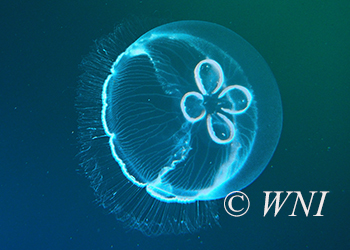| Corals, Sea Anemones, Jellyfish, Hydroids, and Siphonophores (Cnidaria) |
| Corals | Sea Anemones | Jellyfish | Hydroids | Siphonophores |
Cnidaria is a phylum containing four classes of aquatic invertebrates: Anthozoa (corals and sea anemones), Scyphozoa (jellyfish), Cubozoa (box jellies), and Hydrozoa (hydroids and siphonophores). There are between 10,000 and 11,000 species, mostly marine, although some are found in freshwater environments. Comb jellies (Ctenophores) were formerly included in Cnidaria (or Coelenterata).
Cnidarians have two basic body forms: swimming medusae and sedentary polyps, both are radially symmetrical with mouths surrounded by tentacles bearing cnidocytes (stinging cells). Many species form colonies composed of polyps or medusa-like zooids, but others are solitary. Stony corals secrete exoskeleton, which, over many generations, forms coral reefs. Other groups have hydrostatic or fluid-filled skeletons (e.g., jellyfishes).
| Corals and Sea Anemones (Anthozoa) |
||
 |
Jellyfish (Scyphozoa) |
|
| Hydroids and Siphonophores (Hydrozoa) |
||
| Unauthorized use of our images is NOT permitted. | ||
| Hotlinking or "pinning" of our images to websites is STRICTLY PROHIBITED. | ||
| Copyright © Michael Patrikeev - All Rights Reserved | ||
| |
||





